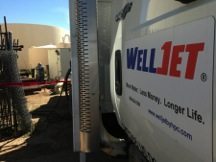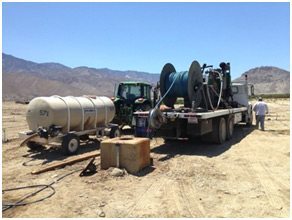Meeting the Challenge of Rehabilitating a Lined Well
When it comes to rehabilitating lined wells, there are two rules of thumb: a liner will buy you five years, and mill slot liners are the hardest to rehabilitate. Well #2 for Rose Valley Water in Peoria, AZ was 10 years old, with mill slot perfs.
Well #2 was drilled in 1997, to a total depth of 908’. The original diameter was 20”, with mill slot perforations 550’ to 720’. The well originally produced 600-700 gpm.
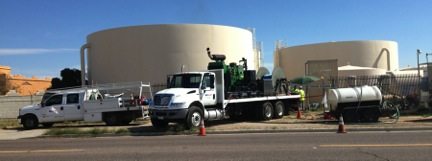
Production began to drop off after a few years, and the well started making sand.
A 16” liner was installed in 2004, with mill slot perfs from 640 to 908. The well went back on line, and produced approximately 500 gpm.
Over the next several years, production declined, and the well again started making sand. Output fell to 210 gpm, with drawdown of 185 feet, for a specific capacity of 1.1.
Downhole video revealed plugged slots, numerous nodules and heavy encrustation. Rose Valley Water needed to improve Well #2’s output and efficiency. The question was: how?
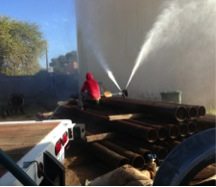
An attempt to rehabilitate the well by brushing did remove some of the encrustation close to static water level.
But it did not succeed in opening up the perfs – or improving performance.
Chemical treatment was ruled out due to the fact that the well was surrounded by homes, and there was nowhere to discharge chemically treated water after rehabilitation.
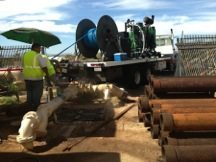
Empire Pump, the general contractor on the Well #2 rehab, recommended bringing in WellJet – for two key reasons:
1) Only WellJet is capable of generating energy through two casings and two gravel packs;
2) WellJet is an entirely green process that uses only water, high pressure, and proprietary technology – no chemicals.
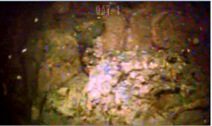
WellJet used its 14.5” Neptune tool inside the 15.25” ID liner, lowered the tool assembly down to the bottom of the perforated area, pressurized the system to 19,000 psi, and worked upwards at a retrieval rate of 1.0-1.2’/minute. This combination of variables was utilized for maximum coverage and penetration of both the liner, and the original casing beyond.
A few feet of fill came in just from jetting.
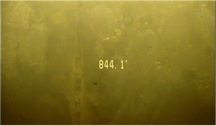
Empire Pump followed the jetting process with expert dual-swab surge-blocking, which yielded an additional 35’ of fill.
Empire continued development via pump surging.
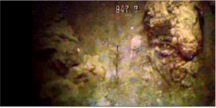
To create a true Before-and-After comparison, the pump was reinstalled at exactly the same depth as before the rehab.
Results were 575 gpm – an improvement in flow rate of 365 gpm, or 274%, with a drawdown of 165 feet – an improvement of 20 feet, or 11%. Specific Capacity was 3.5 – an improvement of 318%.
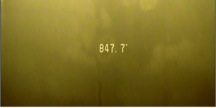
Well #2 is now producing more water than when the liner was first installed 10 years ago. The Empire-WellJet team is pleased to report this success on their first collaboration.
